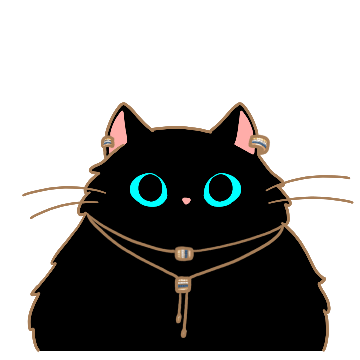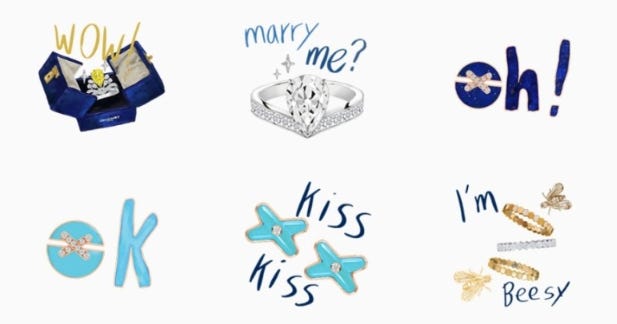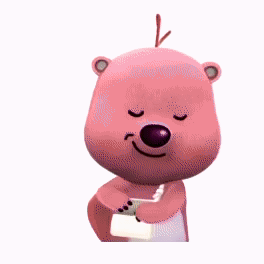A trip to Seoul will make even the most oblivious of people realize something: Seoulites are BIG on luxury.
Even with rumors of a recession looming over the city, it’s not too hard to spot Seoulites hustling through the weekend crowd with a bright orange Hermes or black Chanel shopping bag nonchalantly thrown over their shoulders.
For those of you who want figures: our tiny peninsula of a country ranked 10th on the world’s top luxury markets in 2022, boasting a YOY 29.6% increase in market size (source: KPMG). Numbers aside, the frenzy over luxury fashion is palpable even to the naked eye if you visit neighborhoods like Apgujeong (압구정동) and Hannam (한남동).
So it’s no big surprise that big household names such as Gucci, Prada, Cartier, Chaumet and others are sidling up to GenZ and millennials in Seoul by launching seasonal or collaborative emojis.
To be a bit more specific, luxury brands are launching emojis that are exclusive to Kakao Talk. With more than 97% of South Koreans relying on the messenger app to connect with family, friends, co-workers, bosses, nannies, etc. it’s pretty safe to say that if you don’t have Kakao you probably live under a rock or have ended all secular ties with the world (heck, even the head monk at my grandma’s go-to Buddhist temple uses Kakao).
What’s even more eye catching is that 50% of South Koreans use Kakao emojis when chatting on the app, which translates to about 60 million emojis being sent and received on a daily basis. To put this figure into context, allow me to paraphrase an interesting observation that Adobe enlightens in its annual “Global Emoji Trend Report”: Koreans surpass their American, Australian, British, French, German, Japanese counterparts by 10% in terms of emoji usage frequency, thus topping the list for emoji utilization.
In other words, we, Koreans, take our emojis seriously.
Emojis breathe context
Luxury brands understand that emojis are central to the K-conversation. That’s why they roll out special, limited edition emojis on Kakao to celebrate new product launches, global holidays, Korean holidays, manufactured holidays, brand campaigns—basically the whole gamut of festivities that encourage and validate consumption.
What they don’t understand is that it takes more than just a cute design for an emoji to receive the tap of a hovering finger.
Over the past few years a slew of luxury fashion and jewelry brands have released limited edition emojis that are nice to look at but impractical.
We call this “pretty trash” (예쁜 쓰레기) in Korean.
Emojis that have no place in the discourse of daily life are precisely just that—pretty trash.
While it’s odd to refer to a digital asset as pretty trash, emojis that have no place in the discourse of daily life are precisely just that. For example, Dior Beauty’s holiday emoji collection is animated with an intricacy that embodies the brand’s elegance; ribboned packages decked in golden constellations spring forth from the pages of an equally regal looking diary as if to shout “Have Fun”; a blue bottle for Dior’s male fragrance Sauvage shimmers slightly as it pops open to release the word “Cool”. Both are beautiful illustrations that befit the holiday season.
There’s just one major problem. I don’t see many people using either while chatting online.
In what situation would you send a Sauvage Cool emoji to a friend? And if you really wanted to tell your sister to have fun on her Christmas date, would you be sending her a Dior pop up book emoji? You could probably do either or both if you a) plan to shower your friend or sister with gifts from Dior beauty b) already did so c) are a Dior fanatic just waiting for the right moment to let your pride shine through.
The point here is that Dior Beauty’s holiday emoji collection, as exquisite as it is, doesn’t quite fit into quotidian narratives.
Chaumet echoes Dior’s mistake in releasing a line of emojis that are aesthetically pleasing but are difficult to incorporate into daily conversation. While the “Oh!” and “Ok” emojis are slightly more attuned to day to day life than the others, overall, Chaumet’s holiday collection comes across as being pertinent to a specific scenario: you or your lover have plans to gift each other a Chaumet piece. Or you want to cutely remind your other half that a Chaumet is on your Christmas wishlist by lacing the chatroom with digital diamonds. From a marketing perspective, it’s highly probable that this is what Chaumet is aiming for—surreptitiously remind Kakao users that Christmas is the time of (lavish) giving through emojis.
However, from a branding perspective, such marketing ploys fall flat. Branding is the act of casting a love spell. How are people supposed to fall in love with a brand if they can’t integrate its digital lexicon into the daily fabric of their lives?
Emojis as self-identifiers
Emojis are a brand’s lexicon of seduction. We flock to diamond decked black cats and Prada-wearing prancing bunnies because they’re cute. Humans can’t resist cute.

As a result, emojis open a window of opportunity for brands to establish rapport with potential customers. A rapport that is based in self-identity and expression. We all think we look cute right?
When we choose an emoji out of the 500,000 that exist on Kakao’s platform, we’re essentially selecting our digital representative. How an emoji looks and moves reflects the way we want to be perceived by our digital audience. Want to convey to your date you’re looking forward to that movie on Friday night, but don’t want to come across as overly eager? Then a white platypus baby shyly holding its flippers to its face might be a better pick than a pink rabbit bouncing up and down in glee. The emoji you end up dispatching across the pixelated terrains of the online chatroom contributes to the formation of your digital persona.
Emojis aren’t just simply an aesthetic; they’re nuanced mediums of self-expression.
No character illustrates this point better than Zanmang Loopy, a pink otter with an innocuous look and a lot of sass. Loopy is heralded by GenZ and millennials as the 21st century’s cathartic savior. With small button eyes and an even rounder nose, Loopy doesn’t have much expression by default. This is what makes her great. You can project whatever emotion you want onto her blank face. That her character has a knack for unintentionally dissing others in the Pororo cartoon series makes her an even better candidate for reifying socially repressed emotions such as anger, irritation, annoyance, etc. But such negativity gets diluted in Loopy’s pink cuteness. Much like how we laugh to exert a bit more control over our emotions, wrapping up our feelings in cute emojis has a similar effect.
Emojis aren’t just simply an aesthetic; they’re nuanced mediums of self-expression.
In short, Loopy is a character that speaks to an audience so accustomed to hiding their emotions under a smile—not unlike Loopy’s perpetually blank one—that they undergo a mild form of catharsis when they vent through her. GenZ and millennials channel the frustration they feel towards hierarchical “kkondae” (꼰대) work culture, hyper competitive school environments, wrath invoking ex-boy/girl friends, noisy family, etc. through Loopy.
Therefore, Bvlgari’s decision to release a Bvlgari x Zanmang Loopy emoji collection for Valentine’s Day last year was a move by the brand to inch closer to catharsis-craving GenZ and millennials. While the collaboration surprised many (who would have thought a fine jewelry brand would partner up with a character from a kid’s TV show?) it delighted many more. Bvlgari—a brand deemed too “luxurious”— aligned itself with the cool kid, Loopy, and in doing so, acquired the cultural legitimacy to urge young Seoulites to express, to be themselves, and to (ultimately) splurge on a Bvlgari piece when in rage.
Brands come alive in narratives
Remember the Prada-wearing prancing bunnies I mentioned earlier? I want to wrap up today’s post by highlighting an emoji set that I’ve been gravitating towards recently: the Prada x Benny Holiday Collection.
What I like about this collection is two-fold: it’s adorable and I can actually use it.
Benny is a white bunny that’s the right mix of cute, innocent, and trendy. While I might not twirl as gracefully as Benny in the snow, I want to imagine that I look just as happy when I see winter’s first snowfall. Benny’s minimalistic Prada outfits are also something that I want to claim as my own. And like how all good things come in threes, this collection is made complete by the fact that all sixteen Benny emojis are compatible with my daily narrative; there’s a Benny asking “what’s up?”, a Benny bowing in Korean style, a “cheer up” Benny, a Benny taking out a heart from her bag in K-idol fashion, etc. In other words, the Prada x Benny collection encapsulates the two points I’ve been making throughout this entire post: emojis need to be relatable and grounded in context.
It’s been around three weeks since I’ve downloaded the Prada x Benny collection. Since that time, Prada has effectively infiltrated my life and become a part of my day to day narrative. I’ve grown used to seeing Benny’s purple Prada hairband, her demure LBD, her triangular bag (which continues to remind me of triangular shaped kimbap), her sequined New Year’s Eve skirt. Above all, I feel more comfortable with Prada. This feeling of comfort will someday, perhaps, be transcended by naturalness. And at that point, Prada will be almost done proselytizing me. Keep in mind this all started with an emoji!
A caveat before signing off. Not all brands will want to position themselves to be approachable. There is a merit to preserving and maintaining an aura of mystique and unattainability. Whichever the case, affinity for a brand is established through the right context.
Thus, everything boils down to the question of: what narrative do you want your brand to be a part of?





![[video-to-gif output image] [video-to-gif output image]](https://substackcdn.com/image/fetch/$s_!QDUV!,w_1456,c_limit,f_auto,q_auto:good,fl_lossy/https%3A%2F%2Fsubstack-post-media.s3.amazonaws.com%2Fpublic%2Fimages%2Fc97f89f0-b41d-4b34-bc65-cada39f4a6a8_352x350.gif)
![[video-to-gif output image] [video-to-gif output image]](https://substackcdn.com/image/fetch/$s_!FR8l!,w_1456,c_limit,f_auto,q_auto:good,fl_lossy/https%3A%2F%2Fsubstack-post-media.s3.amazonaws.com%2Fpublic%2Fimages%2Ff70ce2fd-e26d-4254-84fd-02949d1ca8ad_342x696.gif)



![[video-to-gif output image] [video-to-gif output image]](https://substackcdn.com/image/fetch/$s_!fOZM!,w_1456,c_limit,f_auto,q_auto:good,fl_lossy/https%3A%2F%2Fsubstack-post-media.s3.amazonaws.com%2Fpublic%2Fimages%2Fed217c82-b036-49c4-a307-ed57c96ad03a_358x684.gif)